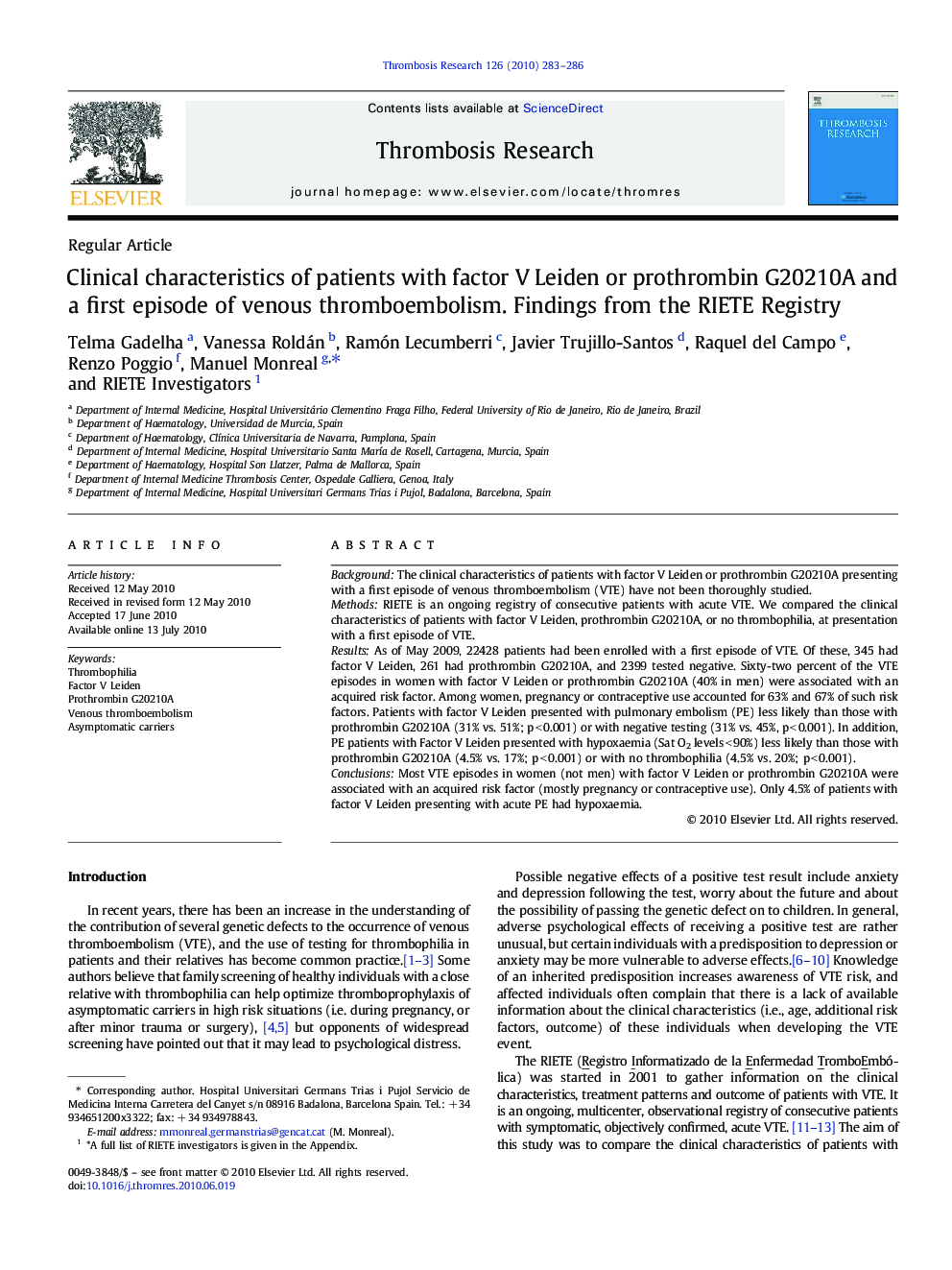| Article ID | Journal | Published Year | Pages | File Type |
|---|---|---|---|---|
| 3027709 | Thrombosis Research | 2010 | 4 Pages |
BackgroundThe clinical characteristics of patients with factor V Leiden or prothrombin G20210A presenting with a first episode of venous thromboembolism (VTE) have not been thoroughly studied.MethodsRIETE is an ongoing registry of consecutive patients with acute VTE. We compared the clinical characteristics of patients with factor V Leiden, prothrombin G20210A, or no thrombophilia, at presentation with a first episode of VTE.ResultsAs of May 2009, 22428 patients had been enrolled with a first episode of VTE. Of these, 345 had factor V Leiden, 261 had prothrombin G20210A, and 2399 tested negative. Sixty-two percent of the VTE episodes in women with factor V Leiden or prothrombin G20210A (40% in men) were associated with an acquired risk factor. Among women, pregnancy or contraceptive use accounted for 63% and 67% of such risk factors. Patients with factor V Leiden presented with pulmonary embolism (PE) less likely than those with prothrombin G20210A (31% vs. 51%; p < 0.001) or with negative testing (31% vs. 45%, p < 0.001). In addition, PE patients with Factor V Leiden presented with hypoxaemia (Sat O2 levels < 90%) less likely than those with prothrombin G20210A (4.5% vs. 17%; p < 0.001) or with no thrombophilia (4.5% vs. 20%; p < 0.001).ConclusionsMost VTE episodes in women (not men) with factor V Leiden or prothrombin G20210A were associated with an acquired risk factor (mostly pregnancy or contraceptive use). Only 4.5% of patients with factor V Leiden presenting with acute PE had hypoxaemia.
